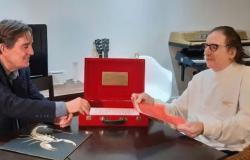In the movie The Matrix From 1999, Thomas Anderson (Alias Neo) discovers a truth that ends all truths: the universe is a computer simulation. Similarly, the Simulated Universe Theory It refers to the hypothesis that our reality is not such but a large -scale computer simulation where the universe would be a great game and where both physics and consciousness could be generated by computer algorithms.
This controversial simulated universe theory that is based on software, was proposed in 2024 by the physicist of the University of Portsmouth and co -founder and executive director of the Information Physics Institute, Melvin Vopsonbased on the knowledge of the computer area. Now, in a new work published in the magazine AIP Advances, the scientist suggests that Gravity is not really a force, but the result of a computer process more within a simulated universe; Something that happens when the universe tries to stay organized.
The universe, the final computer?
It is not something new. The simulation theory is not exclusive to Professor Vopson; In fact, it is popular among several well -recognized figures like Elon Musk himself, Founder of Spacex and Tesla. But Vopson has dedicated part of his scientific career to investigate the idea that the universe we perceive could be an advanced computer simulation, hypothesis that he developed widely in his book Reality Reloaded: The Scientific Case for a Simulated Universe (2023). Now, according to the new extension of its hypothesis, gravity could be a manifestation of an optimization mechanism in this simulated universe, helping to reduce information entropy, which would suggest a data compression process similar to that made by computers.
Using the second law of the thermodynamics of information, which dictates that entropy -a measure of disorder in an isolated system – It can only increase or remain constant, but it will never decrease ”The expert affirms that matter and objects in space could be under the process of gravity because the universe tries to maintain ordered and compressed information. Although similar to traditional entropy, information entropy is different. In essence, move several objects near gravity Reduces the necessary amount of computer power To describe the entire system and matter self-organized to reduce the complexity of information coding in space-time.


The transformation of a cosmic dust cloud into a dense planet illustrates how gravity functions as a natural data compression mechanism in the universe.
“My findings in this study agree with the idea that the universe could function as a giant machine, or that our reality is a simulated construction,” says Vopson. “Like computers try to save space and function more efficiently, The universe could be doing exactly the same. ”
Second Infodynamic Law
This idea comes from a branch of science known as information physics, which suggests that physical reality is composed of structured information. Thus, while entropy tends to increase over time, the entropy of information tends to decrease, according to Vopopson, who calls this rule the “Second Law of Infodynamics.”
Moral
Although it is a very popular theory, especially for computers lovers, this work It does not seem to offer much evidence of weight or form or ways of scientific researchsince all their postulates are based on set aside the laws of real physics. If the universe is really a computer construction will remain an unknownsince even if we were within a simulation, it could be impossible to discern it from within.
Subscribe to our WhatsApp channel and receives the latest news about science, animals and the environment, as well as the best photos in the style National Geographic.





